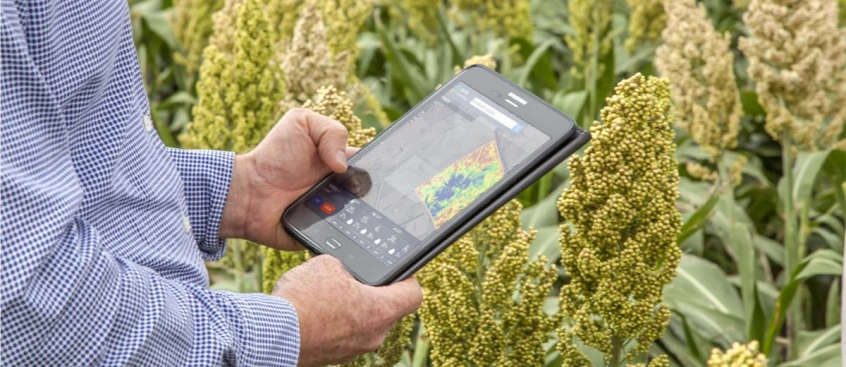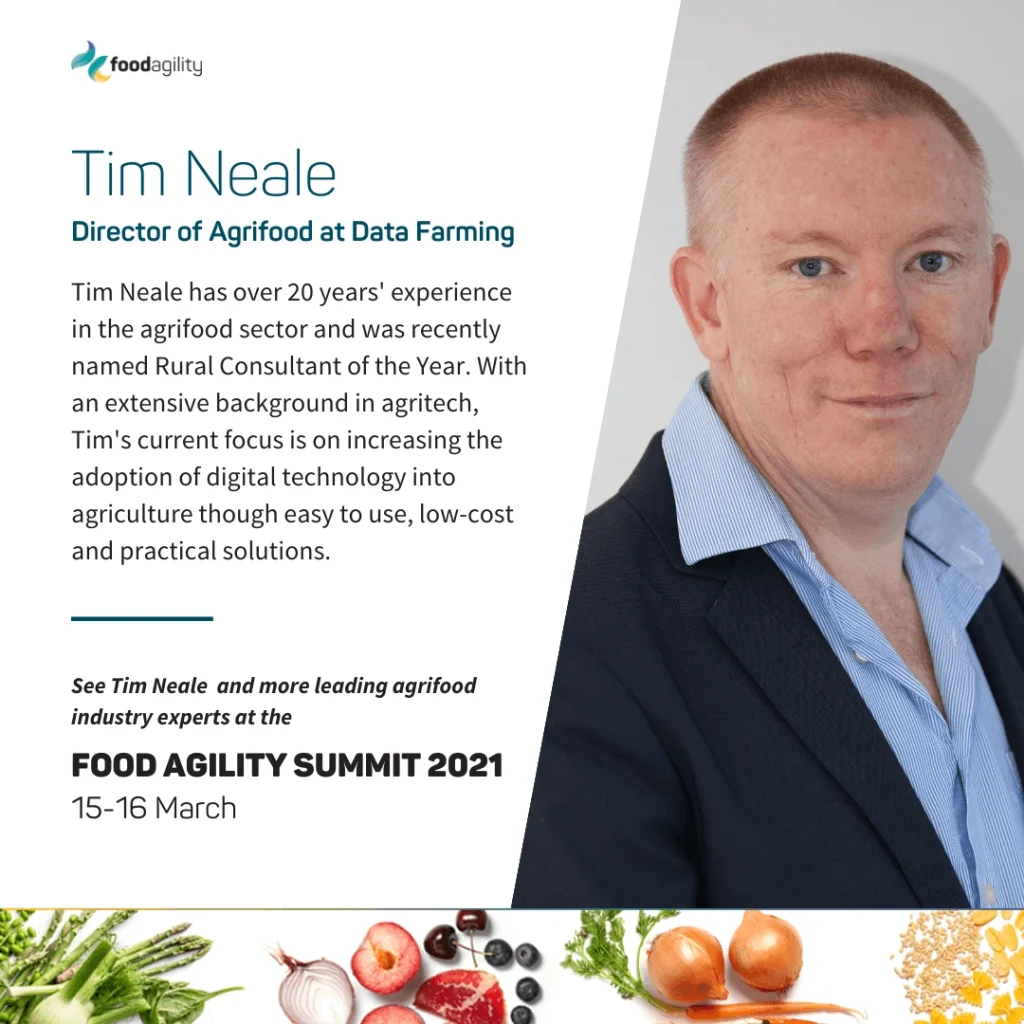
Agtech perspectives: Tim Neale, precision agriculture expert
Mar 02 2021

Tim Neale’s experience with agtech is two decades in the making. Through his company DataFarming he is working with over 20,000 farms to implement precision agriculture solutions. Tim is passionate about agtech adoption by keeping agtech simple, effective, and easy to use.
This is the latest interview from our AgTech Finder perspectives series, and we’re delighted to have Tim provide his insights for farmers, agronomists and agtech providers about how best to deliver adoption of agtech.

Measure to manage
Tim explains, there is no going back when it comes to technology, and agtech is no different.
“I know people, farmers included, get frustrated with technology. But we can’t go back to a pre-digital era and why would we want to when we have agronomists able to make $100,000 decisions on a single satellite image.
“We’ve got make agtech work for the farmer. The more measuring tools in a farmer’s toolbox the better to make decisions – measure to manage is the key message here. But decision-support tools have been too complex and we as agtech providers need to improve that.”
Drivers for using agtech on-farm
As Tim explains, the driver for farmers to use agtech isn’t always a financial return on investment.
“A farmer’s driver for using agtech is value and that’s not always monetary. The total drivers for adoption are more all-encompassing than just economic.”
Tim has identified 7 key drivers for farmers to adopt agtech:
- Cost – what are the upfront costs and will it save me money?
- Convenience – does it make my life easier?
- Compliance – will this support my regulatory requirements now and in the future, including providing the evidence I need?
- Complexity – is it easy to use and get started?
- Capacity – do more with less
- Connectivity – can ‘this’ plug into ‘that’?
- Consumers – what can this prove to the consumer? Consumers are demanding more from farmers in the way of proof of provenance and sustainability credentials.
- Champions – are peers championing the product?
The agtech journey
At DataFarming, Tim and Peta take farmers on a journey of discovery when it comes to agtech.
“You can’t keep putting bad technology out there that doesn’t work or doesn’t deliver. If you don’t get it right, then farmers are going to hesitate to go down the agtech path. This is where the technology sector has failed the agricultural industry on many occasions.”
At DataFarming we break down the barriers to adoption and release products that are going to work, make life easier, and so then make overall adoption of agtech easy.”
To help adoption uptake by farmers, Tim sees that agtech should have the following characteristics:
- Make it easy to get started
- Keep it simple
- Have a low-cost entry point
- Deliver instant value
- As a provider, provide support and respond to enquiries
- Make it relevant and talk the language
- Make it intuitive so it just works
Agronomists are key
The role of agronomists is changing every day – farms are bigger, they need to manage more, every year there are less farmers with the corporatisation of agriculture, and the expectation is that they are now the ‘tech’ people.
“The model of investment in Australia is broken; we are the worst OECD country globally with respect to commercialisation of research. That needs to change, starting with government and universities truly working with businesses to build out complete solutions, not creating market failures as is happening now.”
Connect with Tim Neale and DataFarming
- Connect with Tim on LinkedIn
- Follow Tim on Twitter
- See DataFarming and products on AgTech Finder
- Visit the DataFarming website

Hear from Tim at the Food Agility Summit 2021
Hear from Tim at the Food Agility Summit 15-16 March 2021 in a feature panel session called Hunting unicorns in a burgeoning Australian agtech industry. An online event for farmers, producers, agrifood ventures and agtech providers not to be missed!

Food Agility Summit 2021: foodagilitysummit2021.com
Posted in Farmer Advice
You Might Also Like
Jul 23 2025
Low yields from wheat production? Here’s why.
For the past two decades, agronomists and farmers have been trying to solve the problem of low yields using Variable Rate Fertilisation application. However, yield is only half of the equation. In-field…
Read MoreMay 25 2025
Get more from your livestock data with these six agtech solutions
Farmers across Australia are producing more data than ever. But much of it remains frustratingly siloed. Here’s how you can get the most from your data as a livestock producer.
Read MoreMay 20 2025
Purchasing AgTech? Ask yourself these five questions first.
Whether it’s your first time, or you’ve already got plenty of technology in operation – asking the right questions ensures you take the best approach.
Read MoreApr 22 2025
Building farm data trust
At AgTech Finder we ask vendors to provide their data policies so that farmers can make informed choices about agtech and be comfortable about the way their data is being collected and…
Read MoreList your company on AgTech Finder.
AgTech Finder helps Australian Farmers and producers find the product that’s right for them.
Register now to be a part of the community, get access to a national platform and start gaining insights to improve your products.
